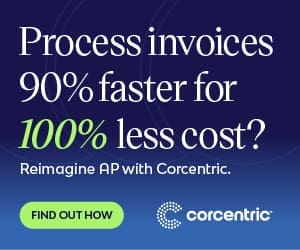Accounts Payable Automation Trends: Optimizing Operational Performance With Accounts Payable Automation Software

Accounts Payable Automation Trends
Accounts payable automation offers Finance Executives multitude of benefits. Streamlining processes, reducing costs, improving accuracy, and facilitating collaboration are some of the advantages of utilizing accounts payable automation software (APA). Beyond these instrumental benefits, C-Suite decision makers would be remiss to overlook the potential to positively impact operational performance.
The use of APA software can allow organizations to enhance their efficiency and productivity. Automation of recurring tasks reduces tedious manual labor and mundane data entry, allowing organizations to shift resources towards delivering greater value. Automation also enhances operational accuracy via greater attention to detail and the prevention of human error. Doing away with manual processes also boost an organizations speed to market. APA delivers these advantages at fraction of the time and cost associated with such procedures.
For C-Suit is looking to take advantage of APA for improved operational performance, optimization of few key components will prove critical. Firstly, consider how to restructure processes for more efficient approach to accounts payable workflows. Setting up automated workflows can streamline the process of organizing and approving invoices, ensuring that actions are taken quickly and with accuracy. Consider how best to deploy technology, from focusing on mobile office optimization to utilizing artificial intelligence capabilities. Standardizing processes across departments and integrating data from ERP systems can also go long way to improve workflow.
To manage vendors more effectively and maintain high-quality relationships, many organizations find that access to real-time data can be invaluable. Utilizing APA software allows organizations to have quick and easy access to data related to payments, supplier performance, or other important information. Such robust analytics can be an invaluable asset in times of resource constraints.
Finally, it is worth considering the types of collaboration and strategies that can be pursued with the implementation of APA technology. Any measures that increase collaboration between the organization and stakeholders, vendors, or even internal departments could be highly beneficial to organizational performance, by leveraging APA to collaborate more quickly and efficiently with vendors or other stakeholders. Sharing documents, important information, and engaging in better communication can provide organizations with major competitive advantage.
Accounts payable automation software can be powerful tool for C-Suite executives, who are looking to boost organizational efficiency and performance. By looking for opportunities to streamline procedures, deploy technology, integrate data, and engage in better collaboration, decision makers can quickly take advantage of the APA capabilities for operational enhancement.

